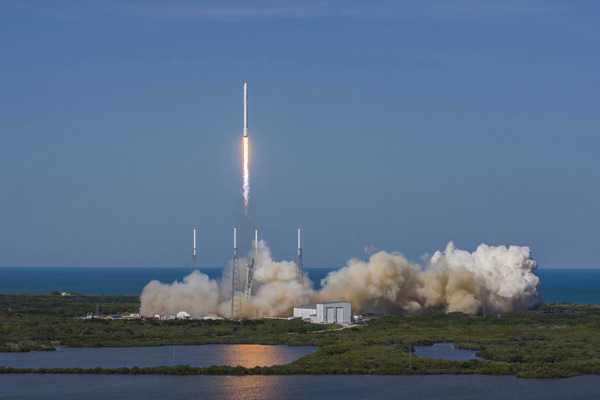SpaceX rocket blasts off, then lands on ocean platform
(Agencies) Updated: 2016-04-09 04:56
 |
|
A SpaceX Falcon 9 rocket blasts off from Cape Canaveral, Florida April 8, 2016 in this handout photo provided by SpaceX. [Photo/Agencies] |
The liftoff at 4:43 pm EDT (2043 GMT) from Cape Canaveral marked the resumption of resupply flights by privately owned Space Exploration Technologies for NASA following a launch accident in June 2015 that destroyed a different cargo payload for the space station.
About 2-1/2 minutes after Friday's launch, the main part of the two-stage SpaceX rocket separated, turned around and headed toward a landing platform floating in the Atlantic about 185 miles (300 km) northeast of Cape Canaveral.
A live video feed broadcast on NASA television showed the rocket booster, its four landing legs extended, descending over the ocean before settling itself upright on the platform, roughly eight minutes after launch.
Four previous at-sea landing bids had failed. But a Falcon 9 achieved a successful ground-based touchdown in December. Friday's feat marked yet another major milestone in the quest by high-tech entrepreneur Elon Musk's launch service to develop a cheap, reusable rocket.
The rocket's cargo ship, dubbed Dragon, was due to arrive on Sunday at the International Space Station, the $100 billion laboratory flying about 250 miles (400 km) above Earth.
The delivery vehicle was packed with about 7,000 pounds (3,175 kg) of food, supplies and science experiments, including a prototype inflatable habitat, bound for the orbital outpost.







